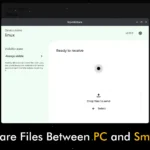Mastering the fsck Command: Repair Linux File Systems Like a Pro
The “fsck” command (which stands for “file system check“) is a Linux command-line utility used to check and repair the integrity of a file system on storage devices like HDDs or SSDs. Nowadays, Linux filesystems support journaling, which eliminates the need for fsck. However, there





